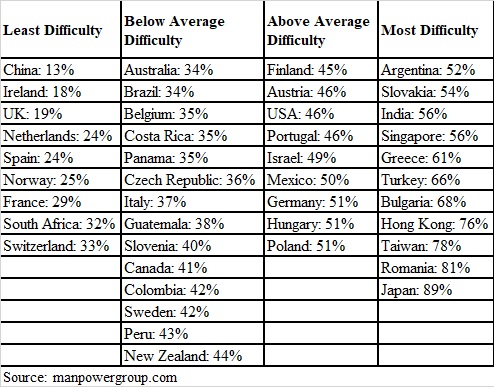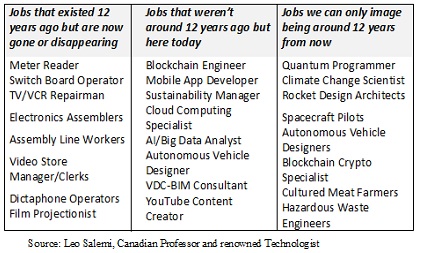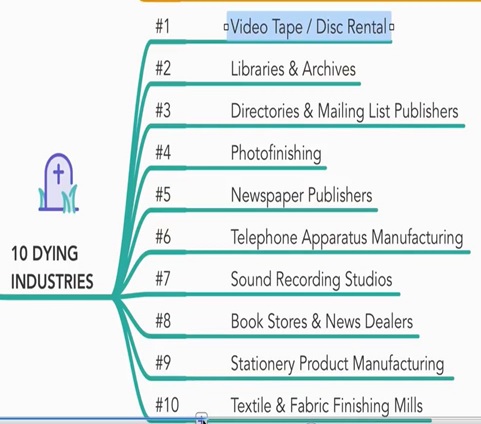
War for Talent: The Skills Gap (Blog)
A talent shortage is affecting companies not only in Pakistan but also worldwide. According to the latest Manpower Talent Shortage Survey by Manpower Group[1], 45% of employers across the globe report that they cannot find the skills they need. The German Economic Institute recently estimated that a shortage of skilled labor, estimated at 440,000 skilled workers, would cost the German economy EUR 30 billion a year in GDP growth (to be precise 0.9 percentage points).
According to Manpower Group’s “Talent Shortage Survey 2018”, the working population of the world in declining and talent pools are shrinking. Technology is evolving faster than ever, changing the skills needed for jobs and shortening the life cycle of those skills. We are also seeing a bifurcation of the workforce — those with in-demand skills versus those with high-supply skills.
The immediate concern is not the number of potential candidates, it’s a talent mismatch. There are not enough sufficiently skilled people in the right places at the right times. According to the report the top 10 jobs for which employers are having difficulty filling globally 1) Skilled Trade Workers (especially chefs/bakers/butchers, mechanics and electricians) 2) Sales Representative 3) Engineers (especially mechanical, electrical and civil engineers) 4) Drivers (especially truck/lorry/heavy goods drivers, delivery/courier drivers, heavy equipment/ construction drivers) 5) Technicians 6) IT (Cyber security experts, network administrator and technical supports) Management/Executives 7) Accounting & Finance Staff (especially book keepers, certified accountants and financial analysts) 8) professionals (Project Management, Lawyers and Researchers) 9) Office Support (Administrative Assistants, PAs and Receptionists) 10) Manufacturing (Production and Machine Operators).
The problem of talent shortage is severe in Japan where 89% employers are experiencing difficulty in filling jobs, while in China only 13% are experiencing the same issue.

Japanese employers face difficulties in hiring skilled and talented workers because Japanese industries are the most sophisticated industries in the world. Japanese manufacturing and services industries believe in innovations and high-performance technologies. They need high performing employees to produce quality products. It is difficult for academia and other related institutes to provide required skilled and talented manpower to industry because of the following reasons:
- Academia and other institutes cannot adopt latest technologies immediately,
- It is difficult to develop capacity of academic staff immediately,
- Financial constraints, and
- Sharing of knowledge and innovation between academia and industry is not seamless.
Talent shortages are impacting organizations ability to meet their client needs; the most likely consequences are expected to be a reduction in ability to serve clients and reduced competitiveness/productivity An increase in employee turnover, lower employee engagement and morale, reduced innovation and creativity in their organization will all lead to higher compensation costs.
Employers are using following strategies to overcome the talent shortage:
- People Practices: employers are revising their people practices to provide more training and development for existing staff; 54% of employers now provide additional training and development.
- Talent Sources: employers are seeking to explore previously untapped sources, young people and candidates who have potential to learn and grow.
- Work Models: employers focus on their talent pipeline and redesigning existing work procedure by sharing work assignment between different employees. Unfortunately, a big percentage of employers are not pursuing any strategy to overcome talent shortages.
It is suggested that unskilled issue could be addressed to a large extent by imparting technical and skilled based education to the youth. No skilled person would be found unemployed, and companies would take benefits from these skilled persons and produce high quality products in Pakistan.
Now, the question is how we train our youth to face future changing environment of employment and reduce the unemployment rate. According to a report published by Dell Technologies and authored by the Institute For The Future (IFTF) and a panel of 20 tech, business and academic experts from around the world, 85 per cent of the jobs that will exist in 2030 haven’t even been invented yet.
12 years ago, not even the experts could have imagined that jobs like Mobile App Developers, VDC Consultants, Cloud Computing Specialists and Block-chain Engineers would be in demand today. The following table below which lists some of the past, present and future positions and answer the question, how do we prepare for jobs that don’t exist yet? Especially, when things are changing so fast.

Preparing for a job that doesn’t exist yet is compounded by the fact that students entering a 4 year program in 2019 may not have the skills that industry is looking for when they graduate in 2023. For example, how many students who started in 2014 chose a career path that would train them to become a Blockchain Engineer today? The demand for Blockchain professionals, (Economist, Business and IT graduates and Engineers) has increased by 400 percent since late 2017.

Suggestions to address the shortage of talent issue
- Say hello to the hybrid workforce
The hybrid workforce is a combination of full-time employees and contractors, which allows service companies to take advantage of their contractors, as well as use their trusted full-time technicians, which increases when the workload is increased. Service companies are primarily moving from full-time dedicated staff to third-party independent contractor companies. Having this flexible workforce (i.e., contractors) gives companies a better chance of growing and increasing profitability than previously thought. We can easily create hybrid workforce environment by adding gig workers in organizations and human/machine partnerships.
- Create an employee referral program
It is no secret that some of the most successful hires are referred by existing team members. And this is true in almost every industry. In fact, according to Career Builder, 82% of employers’ rate employee referrals as the top source of ROI when it comes to hiring. Which is why developing a well-structured employee referral program can make a big difference when it comes to building a robust talent pipeline. The best way to do it would be to offer clear incentives to both full-time and temporary employees, leverage social media whenever possible and keep track of where the best referrals are coming from.
- Adopt 4Bs Model (Build, Buy, Borrow and Bridge)
Build – Invest in learning and development to grow your talent pipeline
Buy – Go to external market to find the best talent that cannot be built in-house in the timeframe required,
Borrow – Cultivate communities of talent outside the organization, including part-time, freelance, contract and temporary workers to complement existing skills,
Bridge – Help people move on and move up to new roles inside or outside the organization.
Current formal and informal educations system need revolutionary changes according to top fastest growing industries of the world. These industries are: Green energy, E commerce, Consulting, Virtual Reality and augmented VR, Bio-tech, Elder care, Cyber Security and Fin Tech.
Update
Cloud Skills demand is growing very fast and sufficient job opportunities in the IT industry is creating. In a recently published blog (How to Weather the Cloud Skills Shortage) by TOPTAL research, claims that cloud skills shortage is growing and employers cannot find skilled talent in this most demanding field. The blog has very interesting statistics regarding Cloud Skills Shortage and also identifies the seven most demanding cloud skills. https://www.toptal.com/insights/future-of-work/-aws-cloud-skills-shortage
[1] https://manpowergroup.com/ ; https://go.manpowergroup.com/talent-shortage



